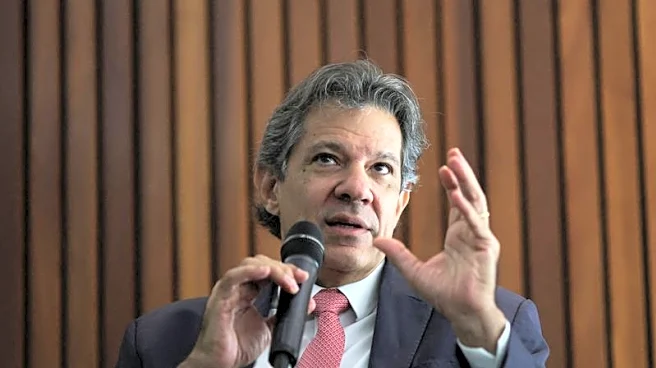What's Happening?
Ford CEO Jim Farley has raised concerns about the shortage of blue-collar workers needed to construct AI data centers and operate factories in the U.S. With AI projected to become a $4.8 trillion market by 2033, Farley emphasizes the lack of skilled labor to support this growth. Despite efforts to revive factory jobs through tariffs, recruitment and retention issues persist in manufacturing. Farley identifies this as a crisis affecting the 'essential economy' of blue-collar workers, which contributes significantly to the U.S. GDP. The shortage is attributed to an aging workforce and restrictive immigration policies, with Farley advocating for increased vocational training and policy changes to address the issue.
Why It's Important?
The labor shortage in the AI sector poses a significant challenge to the U.S.'s ability to capitalize on the growing demand for data centers and manufacturing facilities. As AI technology continues to expand, the need for skilled workers becomes critical to sustaining economic growth and technological advancement. Farley's concerns highlight the broader implications for the U.S. economy, where a lack of labor could hinder the country's competitive edge in the global AI market. Addressing these shortages through policy changes and investment in vocational training could help bridge the gap and ensure the U.S. remains a leader in AI development.
What's Next?
Farley suggests that solving the labor shortage will require policy changes, including increased investment in vocational training and apprenticeship opportunities. He advocates for pro-trade policies and regulatory reforms to build capacity in the workforce. As demand for AI infrastructure continues to rise, stakeholders may need to collaborate on strategies to attract and retain skilled workers. The success of these initiatives could determine the U.S.'s ability to meet its AI goals and maintain economic vibrancy. Farley's call for a new mindset around the essential economy may also influence public policy and corporate strategies in the coming years.











